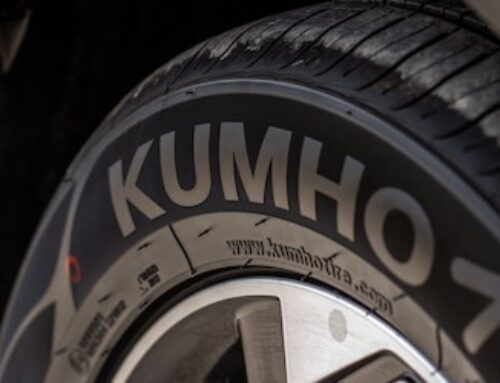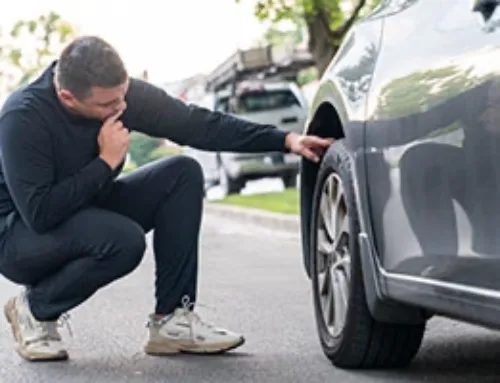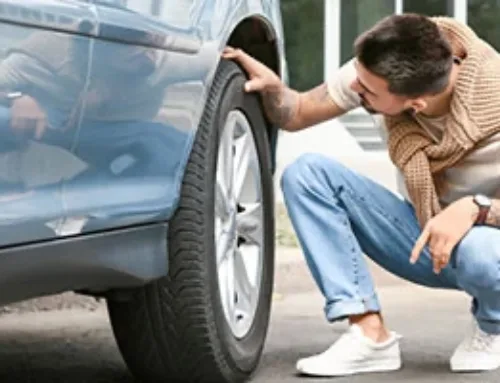Table of Contents
Did you know that low tire tread depth can be dangerous, reducing braking performance and increasing the risk of skidding? It may seem confusing knowing how to check on this, but once you know how to monitor your tire’s tread and understand the minimum tread depth on tires, it’s extremely easy to stay safe. In this essential guide from the GoTires experts, we’ll explore tire tread depth guidelines, how to measure your tread depth, and answer some of the most common questions about tire treads.
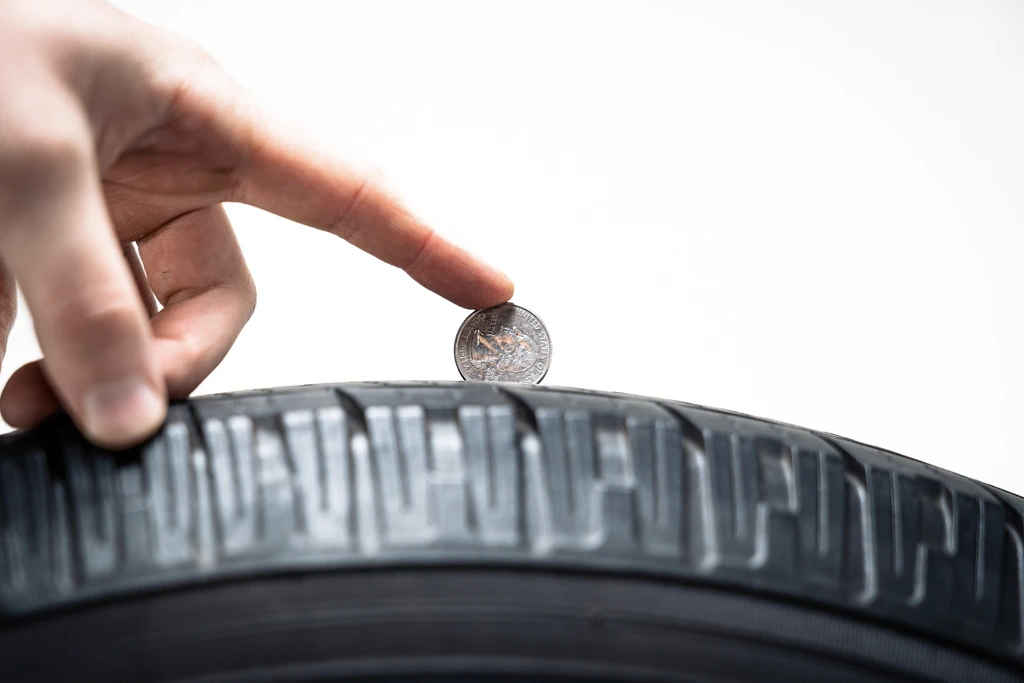
Tire tread depth guidelines
Tire tread depth is crucial in ensuring your vehicle is safe and performs well on the road. The most common legal minimum tread depth for passenger vehicles in the US is 2/32 of an inch, but this varies from state to state, so it’s important to know what your state laws are.
The majority of states (42 to be exact) agree that 2/32″ is the legal minimum, but two states, Idaho and California, set it at 1/32″. Even six states have no tread depth standards, and they are West Virginia, South Carolina, North Dakota, New Mexico, Montana, and Arkansas.
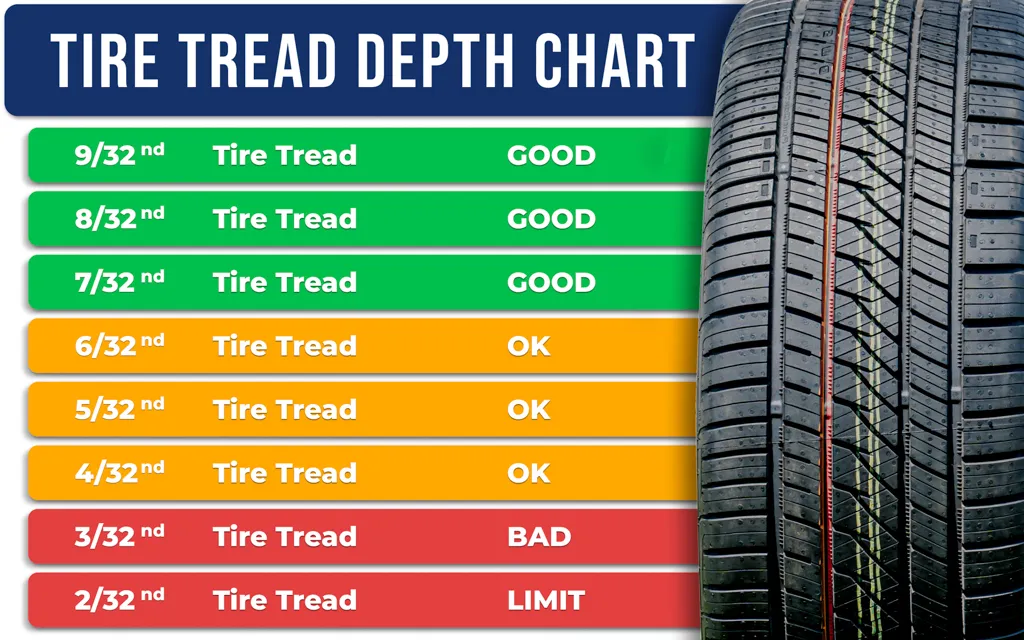
Is 2/32″ the best guideline?
Research from the NIH suggests that our current guidelines of 2/32″ may not be ideal. The research found that tires begin to lose around 50% of their traction with 4/32″ and lower tread depths on damp or wet roads when driving at highway speeds. This means even minimally fading tread depths can be dangerous in fairly common driving conditions, leading to hydroplaning or aquaplaning.
What about winter tires?
Winter tires require deeper treads to stay safe, so 4/32″ or 5/32″ is a common minimum legal tread depth in some states to classify them as winter tires. This is because driving on wet and snowy roads requires more traction and friction with the road to prevent the car from skidding.
How to measure tread depth

There are a few different ways you can measure the tread depth on your tires—and only one requires special equipment, so rest assured you can do this easily at home.
Tread wear indicators
Tires come with built-in tread wear indicators or wear bars. These are small raised bars evenly spaced between the grooves of the tire. When the tread wears down to the same level as the indicators, it’s time to replace your tires—remember, deeper tread depths are better.
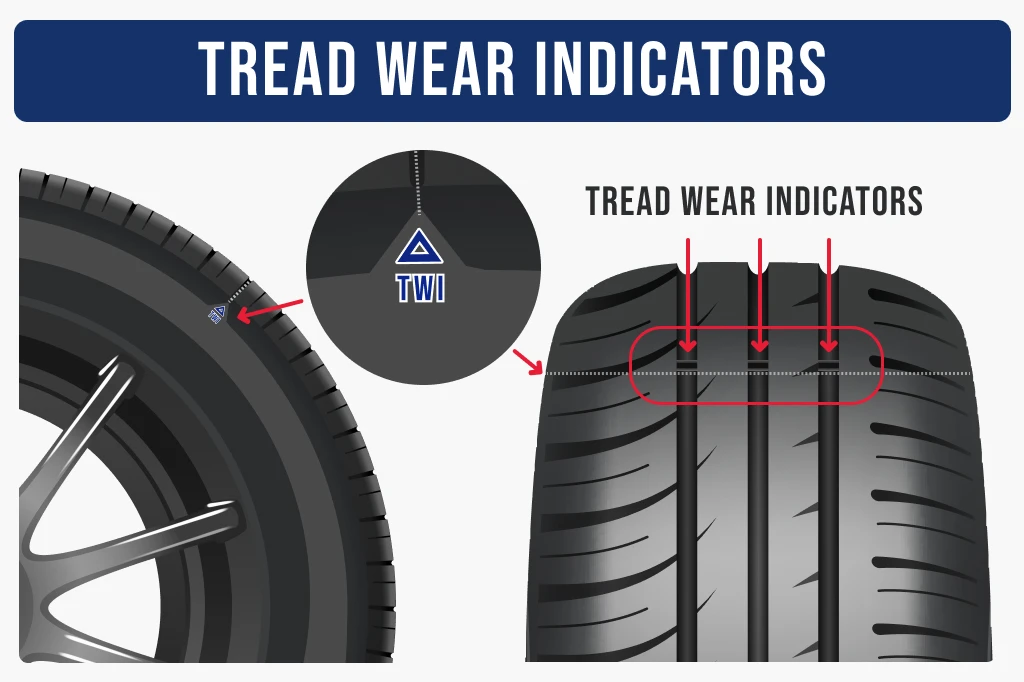
Some winter tire models come with regular and winter tire wear indicators set higher than regular wear bars. Once they are flush with the tread, the tire shouldn’t be used for driving in icy or snowy conditions and may no longer be winter legal in some states.
You can find the location of your tread bars by looking for triangle marks on the sidewall of your tires.
Using a tire tread depth gauge
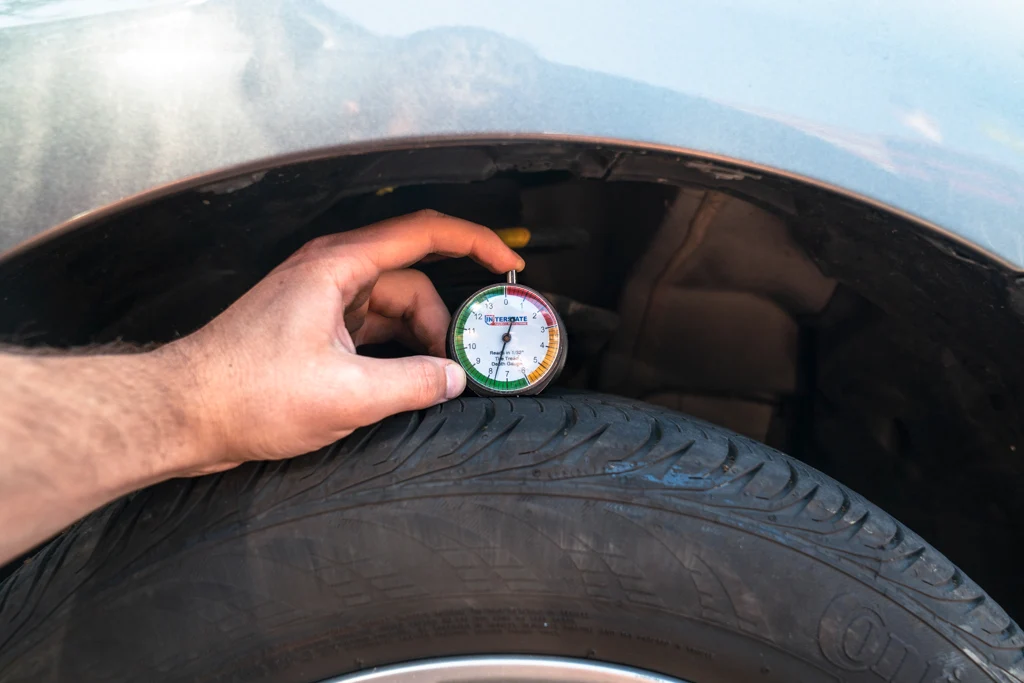
A tire tread depth gauge is a simple and accurate tool used to measure the depth of the treads. To use the gauge, insert the probe into the tire groove, press in until the shoulder is flush with the tread, and read the measurement. It’s a good idea to repeat this process in multiple locations around the tire to make sure you get accurate results, especially if you have uneven tread wear.
The penny test
You may have heard of the penny test—this works as the gap between the edge of a penny and Abraham Lincoln’s head is 2/32”. To do this test, put the penny in the groove between the treads with Lincoln’s head facing down into the tread groove. If you can see all of his head, then your tires need to be replaced.
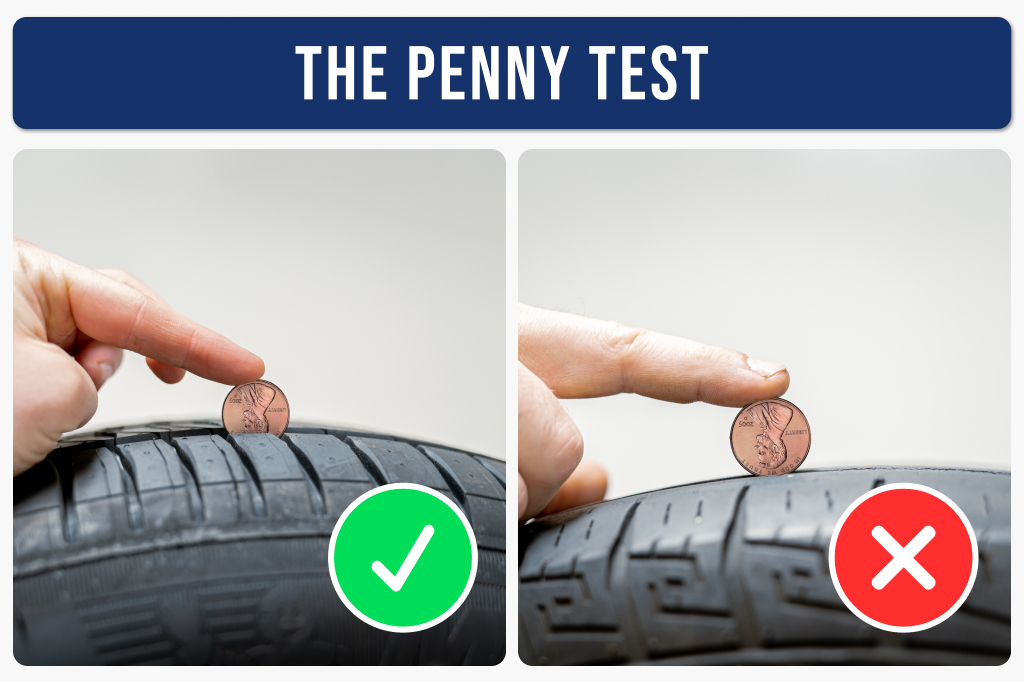
Nowadays, you might also want to do the quarter test, which measures 4/32″. The process is the same as with the penny test – if you can see the top of Washington’s head, your tread is shallower than 4/32″.
Why is tread depth so important?
Having enough tread depth is important for several road safety reasons. Your tire treads affect your traction and braking distance, and shallow treads can make it harder to control your vehicle, especially in wet weather. This means the chances of hydroplaning (skidding on water) increase which can lead to accidents. Low tread depth can also reduce fuel efficiency due to increased rolling resistance, which can cost you more money in the long run.
Frequently Asked Questions
Should I replace tires at 4/32″?
Yes, it’s a good idea to replace your tires at 4/32″. While the legal minimum tread depths are 2/32″, most tire experts recommend replacing your tires at 4/32″. This is because, at 4/32″, tires begin to lose significant performance in wet conditions, increasing the risk of aquaplaning and accidents.
Is 7/32 tire tread good or bad?
A tread depth of 7/32″ is considered good for almost all tires, as it provides ample grip and performance in various driving conditions. As a rule of thumb, the closer your tread depth is to its original depth (usually between 10/32 and 12/32), the better your tires will perform.
Is 3/32 a good tire tread depth?
No, a tread depth of 3/32 is not great, as it is nearing the legal minimum in most states and is already at the point where tire performance is significantly reduced, especially on wet roads. We recommend looking for new tires when your tread depth reaches 4/32″ to ensure optimal safety and performance.


